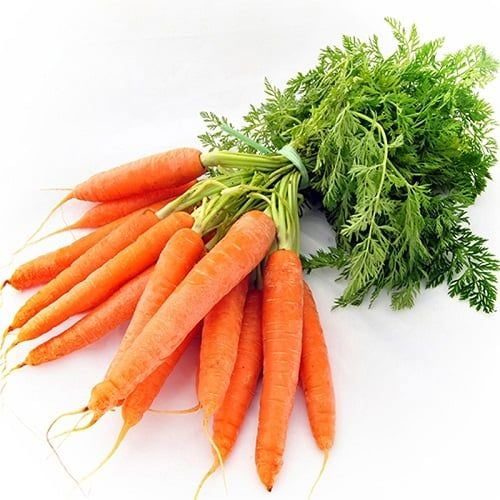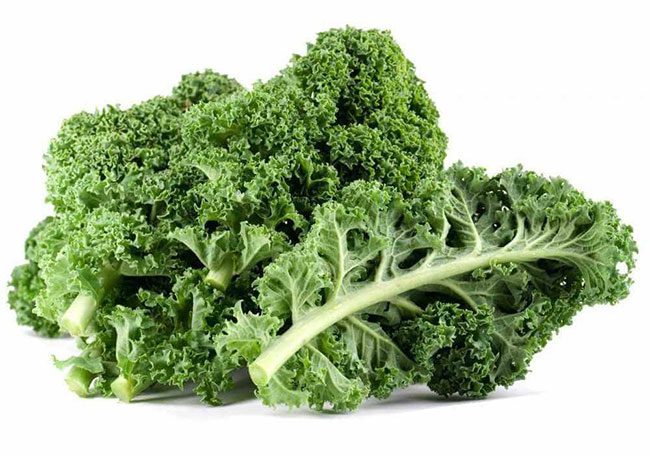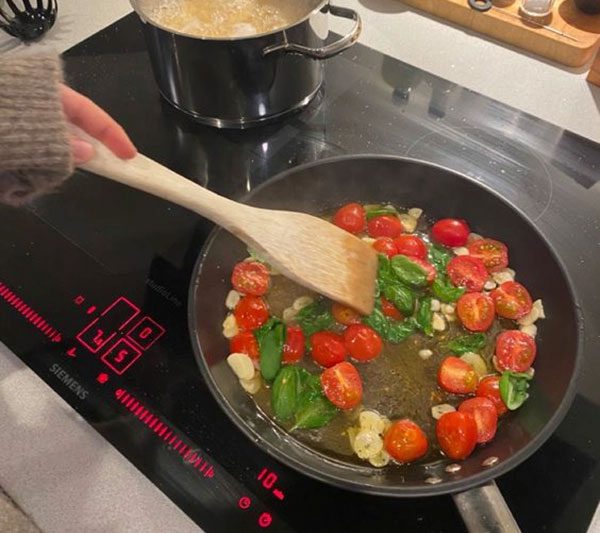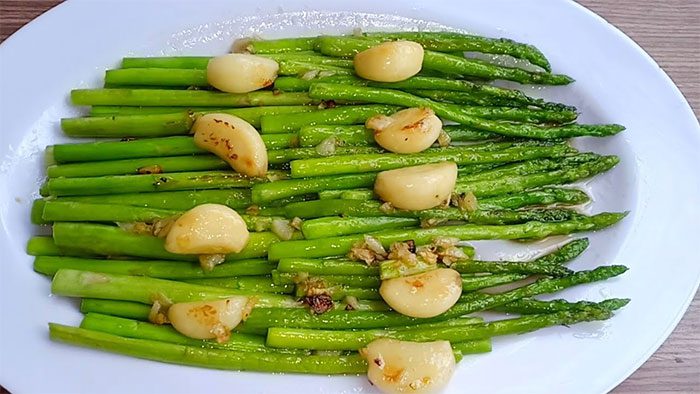It is true that cooking can cause the loss of some nutrients in vegetables, but this does not apply to all types of vegetables.
According to Dr. Amy Myers, Chief Medical Officer at the Austin Ultrahealth Clinic (USA): “Each type of vegetable contains its own unique nutrients, and the way we prepare and consume them can affect the amount of nutrition we receive. In fact, improper cooking methods can lead to the loss of beneficial nutrients, which can be harmful to health. However, this does not mean that eating raw vegetables is always better; it depends on the specific type.”
The decision of whether cooking or eating raw is better for health depends on the specific type of vegetable (Illustrative image)
She further stated that whether eaten raw or cooked, vegetables provide fiber, essential vitamins, and minerals such as potassium, folate, and vitamins A, C, and E, along with many other nutrients. “It is true that cooking, which involves the effects of temperature, water, spices, food combinations, and cooking time, can lead to the loss of some nutrients in certain types of vegetables. However, on the contrary, some vegetables may be better for you when cooked, as the cooking process changes their chemical composition.”
Here are 4 types of vegetables that are more nutritious when cooked but are often misunderstood as retaining more nutrients when eaten raw, according to Dr. Amy Myers:
1. Carrots

Cooking carrots releases more beta-carotene.
“If I had to choose whether it’s better to eat carrots raw or cooked, my answer would be cooked,” Dr. Amy Myers said. She explained there are three reasons for this.
First, while raw carrots provide more vitamin C, cooked carrots release more beta-carotene. Beta-carotene is converted into vitamin A in the body, which can boost the immune system and provide numerous health benefits. Meanwhile, beta-carotene is the most important nutrient you get from carrots; the vitamin C content in carrots is not very high, and we can easily obtain this nutrient from many other foods that are richer in vitamin C.
Second, cooking does indeed reduce vitamin C in carrots, but the amount is negligible. Moreover, we can minimize these losses through cooking methods such as steaming, keeping the lid on while cooking, not overcooking, or using excessively high temperatures…
Finally, cooked carrots are generally easier to digest than raw ones.
2. Kale

Kale is another vegetable that should be prioritized for cooking rather than eating raw.
Kale is famous as a “superfood” with numerous health benefits. Consequently, many people have been told to eat it raw or only lightly cooked to preserve its nutrients. Common preparations include salads and juices. However, according to Dr. Amy Myers, kale is a vegetable that should be prioritized for cooking over eating raw.
She stated: “Indeed, methods that involve a lot of water and high temperatures are not optimal for leafy greens, especially those rich in vitamins and minerals. For this reason, we should not overcook kale, use high heat, or add too much salt. The best method is to steam the kale. This method minimizes nutrient loss while being good for health.
For instance, steaming kale inactivates enzymes that prevent your body from utilizing iodine, which is essential for thyroid regulation. If boiling kale, bring the water to a vigorous boil, then add the greens and quickly remove them once they are just tender; eat as soon as possible.”
Moreover, not everyone enjoys the bitter taste of raw kale, which diminishes when cooked. Raw kale is also more difficult to digest compared to cooked kale and can lead to other digestive issues. She also warns that eating raw kale that still contains pesticides can be hazardous to health due to difficulty in thorough cleaning. However, one cannot deny that raw kale is also nutritious and healthy.
3. Tomatoes

Eating cooked tomatoes has more health benefits than raw tomatoes.
“In fact, eating either raw or cooked tomatoes is good for health. However, studies show that eating cooked tomatoes provides more health benefits than raw ones. Unlike many other foods, tomatoes do not lose much nutritional value when cooked at high temperatures. Heating tomatoes increases the levels of lycopene and antioxidants. These are compounds that are very beneficial for health. That’s why experts recommend eating cooked tomatoes more often,” Dr. Amy Myers said.
She further reminded that any cooking method that increases the antioxidant lycopene in tomatoes is beneficial. Lycopene is associated with a reduced risk of many chronic diseases, including heart disease and cancer. For example, boiling tomatoes for 30 minutes can increase their lycopene content by over 50%. However, it is advisable to avoid cooking methods that are too prolonged at high temperatures, as they may reduce the levels of some other nutrients.
Regarding raw tomatoes, you should only eat them when they are fully ripe, avoiding green or moldy tomatoes to prevent poisoning or illness. When eating raw tomatoes, avoid the seeds as they can cause digestive issues and increase the risk of appendicitis in the long run. Do not eat raw tomatoes on an empty stomach, as they contain phenolic resin, which can cause reactions such as vomiting and irritation of the intestines and stomach.
4. Asparagus
Asparagus is not only a delicious, juicy vegetable but also a nutritional powerhouse with numerous health benefits. It contains high levels of vitamin K, folate, and anti-inflammatory, antioxidant nutrients that help boost energy and protect the body from cancer cells. Because of this, many people believe that asparagus should be eaten raw to avoid losing antioxidants and vitamins during cooking. However, Dr. Amy Myers offers contrary advice.

Raw asparagus salad or juice is believed to be less nutritious than cooked asparagus. (Illustrative image).
She explained: “Once again, eating asparagus raw or after cooking both have different benefits. But when it comes to health and nutrition benefits, cooked asparagus is better, especially for those with weak digestive systems.
Because, besides being softer in texture, many important nutrients in asparagus may not be released before cooking. Cooking helps release these nutrients from cell walls, making them easier for the body to absorb. Cooking asparagus breaks down its cell walls, producing higher bioavailable vitamins A, B9, C, and E.
The polyphenols, a powerful antioxidant in asparagus, increase by 16% when cooked. Beta-carotene and quercetin—two strong antioxidants in asparagus—also increase by 24% and 98%, respectively.”
However, she also reminded that cooking can reduce vitamin C content by 10% to 52%. Therefore, it is necessary to consider the intended purpose to maximize the benefits of this wonderful vegetable.



















































